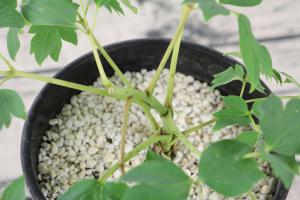Introduction
Plant water status is an essential physiological parameter that describes the level of water in plant tissues. It is a crucial factor that determines plant growth, development, and survival. Water status in a plant is influenced by various environmental and internal factors, such as temperature, humidity, soil type, plant genetics, and photosynthesis. In this article, we will discuss the main characteristics of plant water status.
Plant Water Potential
Plant water potential is the most important parameter that determines plant water status. It is a measure of the potential energy of water in a plant relative to pure water at atmospheric pressure and temperature. The plant water potential is affected by the water's availability in the soil, its movement through the roots, stem, and leaves, and its loss from the plant tissue through transpiration. Plant water potential is expressed in megapascals (MPa), and it ranges from negative to positive values, where negative values reflect a water-deficit condition, and positive values reflect a water-sufficient condition.
Water Use Efficiency
Water use efficiency (WUE) is a crucial characteristic of plant water status. It is defined as the ratio of the amount of biomass produced to the amount of water that the plant transpires. A high WUE indicates that the plant is using water efficiently, and can grow and produce biomass even under water-limited conditions. The WUE values depend on the plant species, genotype, environmental factors, and management practices. WUE is a critical trait for crop plants as it can influence crop yield and water management.
Osmotic Adjustment
Osmotic adjustment is the ability of the plant to regulate the internal water potential in response to changes in external water availability. When a plant experiences water deficit, it can lower its water potential by accumulating solutes such as sugars, amino acids, and ions in the cells. These solutes create an osmotic gradient that helps maintain turgor pressure and prevents wilting. Osmotic adjustment is a critical adaptation mechanism in plants that grow in water-limited environments.
Stomatal Conductance
Stomatal conductance is the characteristic that defines the rate of water loss from the plant through transpiration. It is controlled by the opening and closing of the stomata, which regulate the exchange of gases and water vapor between the plant tissue and the atmosphere. Stomatal conductance is affected by various factors such as light, temperature, humidity, soil moisture, and atmospheric CO2 concentration. Stomatal conductance influences plant water status and can affect plant growth and yield.
Conclusion
In summary, the main characteristics of plant water status include plant water potential, water use efficiency, osmotic adjustment, and stomatal conductance. These traits are essential for plant growth, development, and survival, and they are influenced by various environmental and internal factors. Understanding plant water status is critical to optimize crop yield and improve water management in agriculture.

 how many times do yo...
how many times do yo... how many planted tre...
how many planted tre... how many pine trees ...
how many pine trees ... how many pecan trees...
how many pecan trees... how many plants comp...
how many plants comp... how many plants can ...
how many plants can ... how many plants and ...
how many plants and ... how many pepper plan...
how many pepper plan...





























